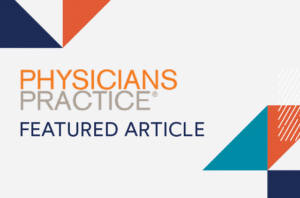Electronic health records (EHR) systems form the foundation of clinical care delivered by healthcare providers and hold a wealth of valuable information, including patient history, test results, illnesses, hospitalizations, and medications.
Because they serve such a vital function, proper EHR integration with patient payment systems like TrustCommerce is essential for giving patients a convenient, safe, and seamless means of submitting payments, and for keeping as many workflows as possible in one system for your staff.
In one recent survey of healthcare information technology, leaders illustrated the importance of EHR integrations. Health IT leaders ranked integration with other systems as the top overall challenge associated with managing electronic health record systems, stating that tight EHR integrations and a streamlined implementation process were among the most important considerations when choosing to work with an outside technology vendor.
From the patient’s perspective, an integrated EHR and billing system creates a better overall user experience. For providers, when EHRs and billing systems can effortlessly communicate with one another, accounting processes are simplified and administrative work is minimized.
The following are three major benefits for healthcare providers of integrating EHR systems with patient payment systems:
- A single touch point: Connecting applications and sharing data between different systems often leads to challenges with accuracy and speed. In contrast, consolidation with a single vendor, such as TrustCommerce, enables providers to centralize patient payments across all touch points, driving cost savings, simplifying technical support, and strengthening financial reporting. TrustCommerce payments platform facilitates payments anytime, anywhere—securely, in compliance, and connected with core business software. Native integrations include leading EHRs and practice management systems such as Epic EHR, Veradigm, and athenahealth, to name a few, as well as financial engagement platform integrations. Unlike other solutions, TrustCommerce is supportive and complementary to the integrated EHR system, working within its native workflow. Once integrated, everything takes place within the EHR, automatically.
- Streamlined financial reporting: In some instances, providers contract with separate vendors to deliver payment gateway and merchant services, making financial reporting needlessly convoluted. Payment gateway refers to the integrated software used to send credit card details securely to the payment network for processing and assist with payment compliance but is not involved in the transfer of funds. Merchant services represent the portion of the payment system that processes transactions and deposits funds to bank accounts. By partnering with TrustCommerce, providers can reduce overall processing costs through bundling payment gateway and merchant services in a single platform and streamline financial reporting.
- Greater healthcare staff efficiency: As a result of payment systems and EHR integration, payments post automatically, without any need for staff to conduct batch updates, reducing the likelihood of errors. Further, standalone payment terminals can be configured to communicate directly with EHRs, seamlessly updating payment information without the hassle of manual entry and enabling staff to focus on what they do best – directly serving patients.
Learn more about how TrustCommerce can help you modernize patient billing processes with EHR integration.





